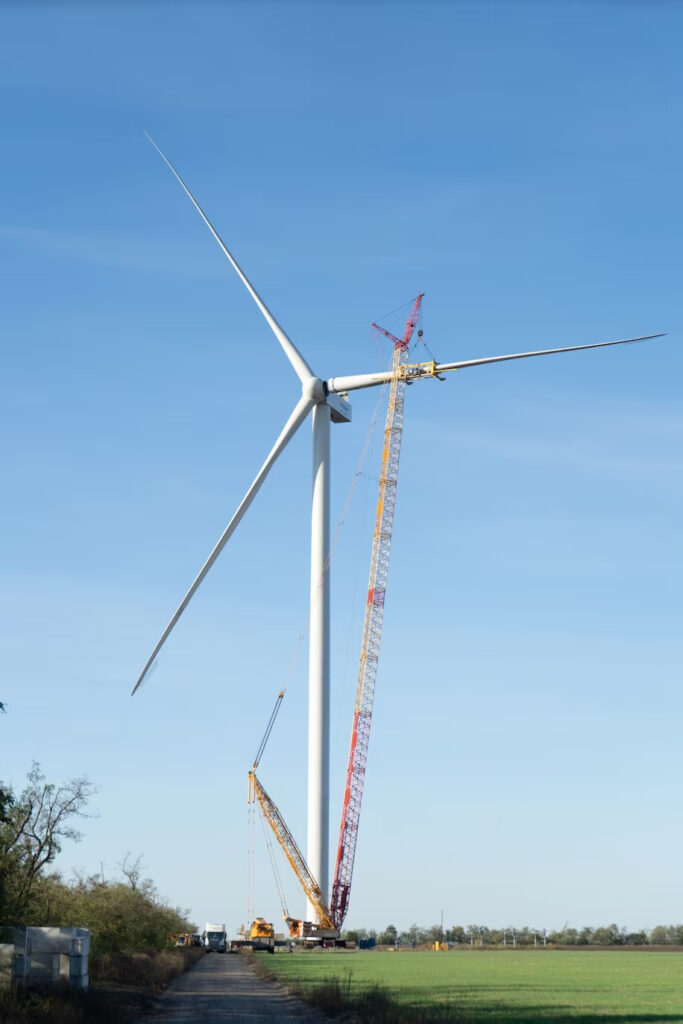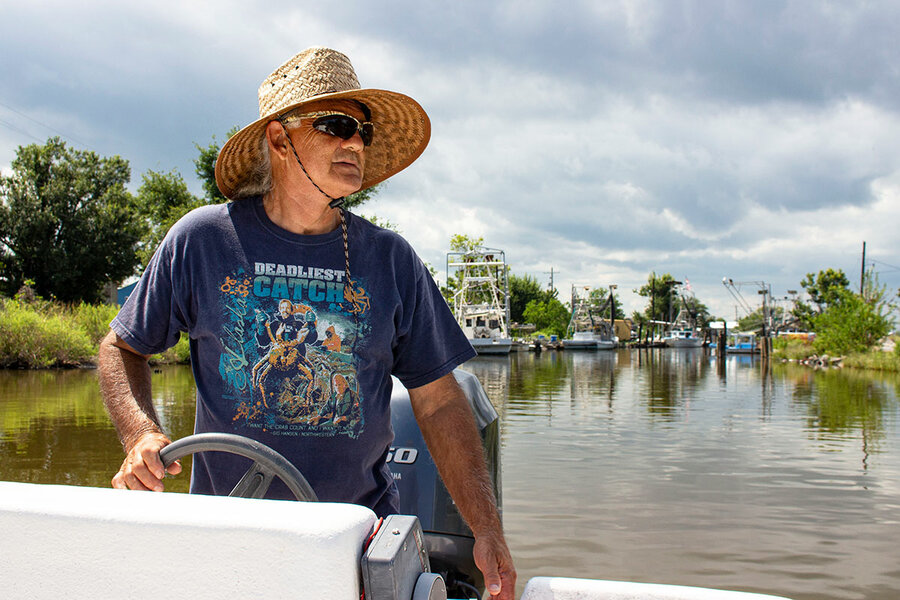Original publication by Evan Halper for washingtonpost.com on 10 march 2023

(DTEK Group)
Towering wind turbines don’t immediately stand out as unusual on a continent where such machines are becoming part of the landscape. But these were built on sites peppered with bomb shelters, and under the wail of air raid sirens.
The Ukrainian energy company DTEK on Friday hit a milestone in the war-torn nation’s audacious bid to remake its energy economy and become a clean power hub for Europe. It announced a dozen turbines had been built and brought online under some of the most challenging conditions anywhere in the world, just 60 miles from the front lines of the war with Russia.
The project in the Mykolaiv region is now helping generate electricity for the area’s beleaguered residents and the broader power grid. The plan is for it to ultimately grow to several dozen turbines, creating enough energy to power as many as a half-million homes.
“When the war started and the focus was on how are we going to survive, we did not know what we would do with this huge construction project,” said Oleksandr Selyshchev, CEO of DTEK Renewables. “Then the early wins of our army made it clear that victory was not in doubt, it was just a matter of time. So we made the decision to continue building.”
The project comes online as Ukraine tries to show its commitment to aligning with the European Union’s plan for greening the power grid. The company behind the Tiligul wind farm, located in the southern part of Ukraine, east of Odessa, was built largely on coal. It is owned by Ukraine oligarch Rinat Akhemtov, who expanded his business empire acquiring Soviet-era fossil fuel assets.
Now, DTEK’s executives are aggressively promoting a fledgling plan for Ukraine to build 30 gigawatts of clean power by 2030, half of which they say could be exported to other countries in the form of electricity or green hydrogen. The transition toward cleaner power was already underway before Russia invaded, with Ukraine’s aging coal infrastructure and depleted mines becoming obsolete and an impractical investment.
But pursuing the transition while the country and its power grid are under constant attack is a colossal challenge. Compounding the difficulty, many of Ukraine’s country’s best sites for producing renewable energy are in or near Russian occupied territory.

(DTEK Group)
“When we first started discussing what to do and how to proceed, it was tough,” Selyshchev said of the Tiligul wind project. “It was a disaster. It was war.” Foreign contractors involved in the project were unable to send their workers into the war zone, meaning Ukraine needed to work with the companies to train local teams to do much of the work.
“We had to create an entirely new approach to construction,” Selyshchev said. “It was winter time. We had air raid alarms going off. It is not like we could work on a normal schedule.”
In the years leading up to the war, Ukraine, long a laggard in greening its power grid, had begun making progress. In 2009, only three percent of the country’s energy mix came from renewable sources such as solar, wind and geothermal power, according to the Center for Strategic and International Studies. By the end of 2020, it had jumped to more than 12%. Ukraine’s goal is to double that by 2035.
“In the long term, Ukraine wants to link its energy future with Europe and not Russia,” said Ben Cahill, a senior fellow in energy security and climate change at CSIS. “That means trying to move toward a role where Ukraine could provide more zero-carbon electricity and potentially export it to Europe.”
Cahill said Ukraine has to compete against other countries thatoffer investors a less risky place to park their money than a nation under attack.
“Every project they are able to build in Ukraine tells investors, ‘this is possible. Don’t write us off,’” Cahill said.
Wind turbines and solar panels also have unique benefits for Ukraine right now, as Russia relentlessly targets the country’s electricity infrastructure. These types of clean power sources can be more resilient than fossil fuel plants, which are more compact, vulnerable targets and tougher to rebuild.
“These installations are harder to destroy with missiles,” said Tatyana Deryugina, an associate professor of finance at University of Illinois at Urbana-Champaign and expert in Ukraine energy. “They are more spread out. It is harder to knock them offline. Even if you knock a wind turbine or some solar panels out, there are others still standing.”

(DTEK Group)
A modest DTEK solar farm in the Kherson region which was partially destroyed by shelling and looting from the Russian military was able to get repaired and back online quickly after the Ukraine military retook control of the area in October. The solar panels, in the village of Tryfonivka, are powering a makeshift transmission line while engineers work to rebuild the local power station, which was completely destroyed.
The solar panels are bringing electricity to a community near the front lines that might still be in the dark had it been reliant on a gas or coal plant.
European Commission President Ursula von der Leyen announced last month in Kyiv that the E.U. hopes to provide an infusion of rooftop solar panels for hospitals, schools, fire departments and other public buildings in Ukraine. Clean energy advocates in Ukraine are hoping the projects can replace emergency generators running on diesel.
“If we want to move forward with these decarbonization efforts, we have to start with smaller scale projects and show they can power a hospital, and that these technologies can provide the basic energy supply for critical infrastructure,” said Anna Ackerman, a policy analyst at the International Institute for Sustainable Development.
She cautioned that the path to meeting Ukraine’s lofty goals for renewable power is still unclear. The types and scale of clean energy resources it develops, she said, will hinge on the direction of the nation’s postwar economy. As war rages, decisions have yet to be made about what industries will be emphasized in peacetime, and where and how they will be built.
“The only clear thing everyone understands is there is no future for coal,” she said. “Otherwise, the picture has not yet come together. It is very difficult in wartime to plan for how the future energy mix might look. But having these discussions is important.”

(DTEK Group)
Allies of Ukraine are eager to engage. At the United Nations Climate Summit late last year in Egypt, U.S. Climate Envoy John F. Kerry joined the Ukraine energy minister to announce their intention to turn the war-torn nation into a staging ground for new clean fuels.
Their plan would make the country a host to advanced nuclear technology American firms are developing, which would be put to use to produce emissions-free hydrogen fuel. “Putin’s unprovoked and brutal invasion of Ukraine will require rebuilding even stronger,” Kerry said at the time.
At the moment, though, Ukraine is just trying to move forward one wind turbine and solar panel at a time.
“Even in wartime, we will continue with this transition,” Selyshchev said.




